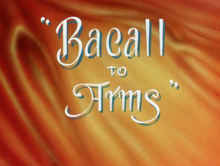
Humphrey DeForest Bogart, colloquially nicknamed Bogie, was an American actor. His performances in classic Hollywood cinema films made him an American cultural icon. In 1999, the American Film Institute selected Bogart as the greatest male star of classic American cinema.
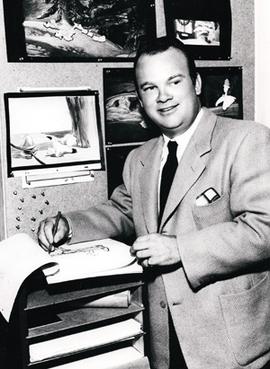
Frederick Bean "Tex" Avery was an American animator, cartoonist, director, and voice actor. He was known for directing and producing animated cartoons during the golden age of American animation. His most significant work was for the Warner Bros. and Metro-Goldwyn-Mayer studios, where he was crucial in the creation and evolution of famous animated characters such as Bugs Bunny, Daffy Duck, Porky Pig, Elmer Fudd, Droopy, Screwy Squirrel, The Wolf, Red Hot Riding Hood, and George and Junior.
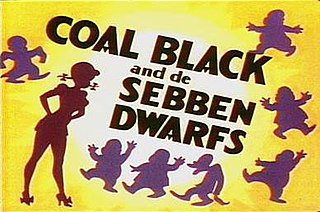
Coal Black and de Sebben Dwarfs is a 1943 Merrie Melodies animated cartoon directed by Bob Clampett. The short was released on January 16, 1943.
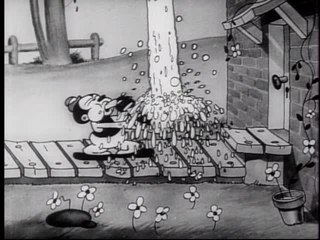
Sinkin' in the Bathtub is the first Warner Bros. theatrical cartoon short as well as the first of the Looney Tunes series. The short debuted in April 1930, at the Warner Bros. Theater in Hollywood. The cartoon features Bosko, and the title is a pun on the 1929 song Singin' in the Bathtub. The film was erroneously copyrighted under the same title as the 1929 song. It is now in the public domain in the United States as the copyright was not renewed.
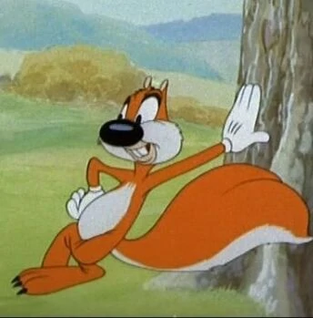
Screwy Squirrel is an animated cartoon character, an anthropomorphic squirrel created by Tex Avery for Metro-Goldwyn-Mayer.

Red Hot Riding Hood is an animated cartoon short subject, directed by Tex Avery and released with the movie Dr. Gillespie's Criminal Case on May 8, 1943, by Metro-Goldwyn-Mayer. In 1994, it was voted number 7 of The 50 Greatest Cartoons of all time by members of the animation field, making it the highest ranked MGM cartoon on the list. It is one of Avery's most popular cartoons, inspiring several of his own "sequel" shorts as well as influencing other cartoons and feature films for years afterward.
To Have and Have Not is a 1944 American romantic war adventure film directed by Howard Hawks, loosely based on Ernest Hemingway's 1937 novel of the same name. It stars Humphrey Bogart, Walter Brennan and Lauren Bacall; it also features Dolores Moran, Hoagy Carmichael, Sheldon Leonard, Dan Seymour, and Marcel Dalio. The plot, centered on the romance between a freelancing fisherman in Martinique and a beautiful American drifter, is complicated by the growing French resistance in Vichy France.
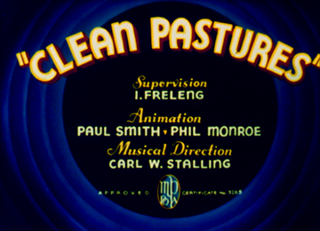
Clean Pastures is a 1937 Warner Bros. Merrie Melodies cartoon directed by Friz Freleng. The short was released on May 22, 1937.
Tin Pan Alley Cats is a 1943 Warner Bros. Merrie Melodies directed by Bob Clampett. A follow-up to Clampett's successful Coal Black and de Sebben Dwarfs, released earlier in 1943, Tin Pan Alley Cats focuses upon contemporary themes of African-American culture, jazz music, and World War II, and features a caricature of jazz musician Fats Waller as an anthropomorphic cat. The short's centerpiece is a fantasy sequence derived from Clampett's black and white Looney Tunes short Porky in Wackyland (1938).

She Was an Acrobat's Daughter is an animated short in the Merrie Melodies series, produced by Vitaphone Productions and released by Warner Bros. Pictures, Inc. on April 10, 1937. This animated short was directed by I. Freleng and produced by Leon Schlesinger. The short is currently available to stream on Max and is a part of the Ultra HD Blu-ray, Blu-ray and iTunes releases of Goodfellas as a part of a Merrie Melodies & Looney Tunes bonus features compilation.
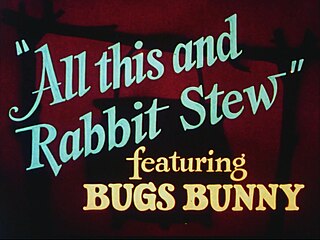
All This and Rabbit Stew is a 1941 Merrie Melodies cartoon directed by Tex Avery. The cartoon was released on September 13, 1941, and features Bugs Bunny.

Slick Hare is a 1947 Merrie Melodies cartoon, directed by Friz Freleng. The film was released on November 1, 1947, and features Bugs Bunny and Elmer Fudd. It parodies the Mocambo nightclub in Los Angeles—in the cartoon referred to as "The Mocrumbo". Mel Blanc voices Bugs, Arthur Q. Bryan voices Elmer Fudd and impressionist Dave Barry portrays Humphrey Bogart. The title is a pun on "hair", from an era when hair slicked down by oil was a popular fashion style for men.

Little Red Riding Rabbit is a 1944 Warner Bros. Merrie Melodies cartoon, directed by Friz Freleng, and starring Bugs Bunny. It is a sendup of the "Little Red Riding Hood" story, and is the first time in which Mel Blanc receives a voice credit.

8 Ball Bunny is a Warner Bros. Looney Tunes cartoon directed by Chuck Jones. The short was released on July 8, 1950, and stars Bugs Bunny and Playboy Penguin.
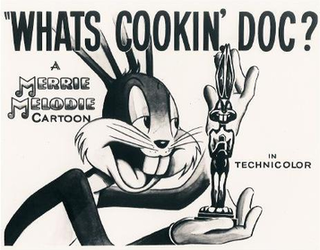
What's Cookin' Doc? is a 1943-produced, 1944 Warner Bros. cartoon in the Merrie Melodies series, directed by Bob Clampett, and stars Bugs Bunny. The short was also written by Michael Sasanoff, and was animated by Robert McKimson, along with uncredited work by Rod Scribner, Phil Monroe and Virgil Ross. The film was released on January 8, 1944.
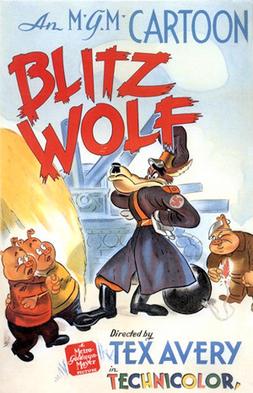
Blitz Wolf is a 1942 American animated propaganda short film produced and distributed by Metro-Goldwyn-Mayer. A parody of the Three Little Pigs told via a World War II perspective, the short was directed by Tex Avery and produced by Fred Quimby. It was nominated for the Academy Award for Best Short Subject: Cartoons but lost to Der Fuehrer's Face, another anti-Nazi World War II parody featuring Donald Duck.

Hittin' the Trail for Hallelujah Land is a 1931 Warner Bros. Merrie Melodies animated cartoon directed by Rudolf Ising. The short was released on November 28, 1931, and stars Piggy.
Naughty Neighbors is a 1939 Warner Bros. Looney Tunes animated short, directed by Bob Clampett. The short was released on October 7, 1939. It features Porky Pig as the leader of the McCoy clan and Petunia Pig as the leader of the Martin clan. The script was written by Warren Foster, the main animator was Izzy Ellis, and the music director was Carl Stalling.

September in the Rain is a 1937 Warner Bros. Merrie Melodies cartoon directed by Friz Freleng. The short was released on December 18, 1937.
Malibu Beach Party is a 1940 Warner Bros. Merrie Melodies cartoon directed by Friz Freleng. The short was released on September 14, 1940.
